CHAPTER 1 Preparing To Be Resilient
A business, organization, or institution isn’t inherently ready for the unexpected, and the resilience that comes with preparedness isn’t automatic. It requires a plan, an understanding among those involved, and a willingness to collaborate and engage partners, stakeholders, constituents, and customers.
Understanding the benefits of a resilient organization is one thing. Taking the steps to develop a plan that will lead to resilience is another. This chapter will present a framework for taking those initial steps, a template that can take you on the road to a blueprint. It’s important to note that every business, organization, and institution is different and there may be tweaks necessary for you. But the basics of building a plan and assessing your current situation can be broadly used and easily adapted.
This guide is intended for planning purposes. Leaders should use this guidance to help determine where threats, weaknesses, and future opportunities may exist. Additional resources may be needed. In the Resources section of this toolkit, you will find information on regional organizations and their approaches to assessing unique situations and the needs of specific partners.
Many entities have already taken the steps to do emergency-specific action plans. Those are important tools that need to be factored into the broader resilience blueprint. Many resources and strategies are already incorporated into those severe weather, active shooter, or unique disaster plans. They will be useful in the work ahead. Alternately, many governments have adopted hazard mitigation plans. They are another important resource.
COG EXAMPLE: Iowa Northland Regional Council of Governments provided an overview of its planning with stakeholders across its six-county service territory. It is an excellent example of an assessment that informs future preparation and action.
Organizational Assessment & Developing Resilience
Determining where to go and how to get there as an institution, business, government, or organization is no easy task. That level of difficulty can be eased dramatically with a working knowledge of some key benchmarks: what is known already, what assets exist, and where are already-developed plans. Doing a basic organizational assessment is an important first step.
Establish & Set Roles
It takes some planning and organization to begin the assessment process. Building a foundation for that work will make it easier, more efficient, and more effective.
- Designate a leadership team to develop the plan.
- Ensure the team includes representatives of operations, divisions, and agencies embedded within the organization.
- Seek input from partners regarding team members and assess missing competencies.
- Include individuals with knowledge of internal financial and technical operations and issues.
Develop Work Plan & Schedule
Putting the plan into a document will allow everyone on the team to know what’s going on, how tasks have been assigned, and where there is progress occurring. It is also a critical element for accountability and transparency.
- Outline specific tasks, responsible individuals, and targeted completion dates.
- Meet regularly to assess progress.
- Keep the work plan updated and adjust as new issues arise.
Collect Information On Assets & Existing Organizational Strategies
It’s difficult to quantify what information already exists and how it might impact the plan unless there is a careful inventory of that data.
- Collect existing plans and determine useful elements for inclusion.
- Evaluate how a disaster or unplanned event could affect the organization.
- Locate existing emergency action plans and incorporate elements.
- Leverage existing hazard mitigation plans and incorporate elements.
- Inventory current assets to define organizational risk and possible recovery resources.
- Inventory these key assets — people, data, operations, inventory, equipment, and buildings — and outline contingency options for each.
- Review existing human resources rules and regulations to assess the impact on operations at a time of crisis.
Ensure A Full Financial Assessment Is Completed
Much like the collection of information, the completion of a financial assessment is necessary for the development of a resilience plan. It can be the difference between an organization’s survival or not.
- Determine if an audit is necessary.
- Review cash flow projections, accounts receivable, and cash on hand.
- Estimate length of time needed to collect accounts receivable.
- Determine the length of time needed to convert inventory to cash. Assess inventory as raw material, work-in-progress, or finished goods. Assess the amount of “stale” or slow-moving items in stock.
- Assess the speed of business payments to accounts payable. If possible, enhance cash on hand by slowing payments to accounts payable. Assess terms with vendors and ascertain the viability of extending terms by 15 to 30 days without seeing deliveries stopped.
Conduct Scenario Planning Exercises
Developing a plan is an important step. But testing it against other possible strategies is an exercise that can uncover missing steps, highlight important elements and identify possible best practices.
- Study existing emergency action plans and hazard mitigation plans.
- Develop worse-case scenarios and outline impacts.
- Consider past crises and review actions and outcomes.
- Review experiences and case studies from peers.
- List resources lost, interrupted, or needed for each scenario.
Develop A Continuity Of Operations Framework
Continuity planning covers response interruptions in operations, communications, supply chains, production capacity, cash flow, etc.
- Identify alternatives for protecting operations, assets, and personnel.
- Draft a comprehensive plan that outlines the requirements and procedures needed to perform essential functions and establishes contingency plans if key resources are not available.

